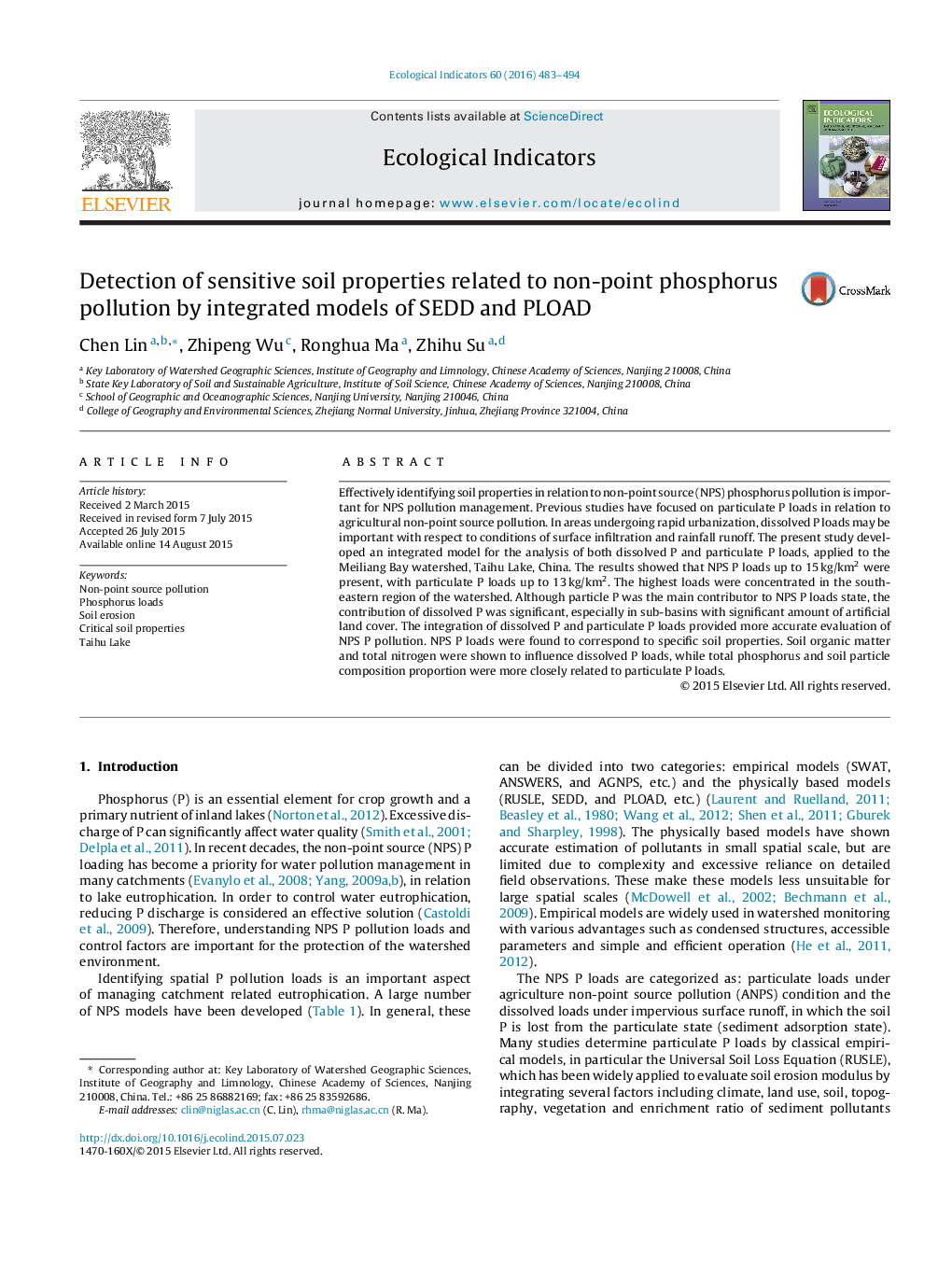| Article ID | Journal | Published Year | Pages | File Type |
|---|---|---|---|---|
| 6294088 | Ecological Indicators | 2016 | 12 Pages |
â¢We developed an integrated model for non-point source P loads assessment in rapid urbanization area.â¢Some key parameters in the model were measured in situ to improve the robustness of the modeling.â¢The critical soil properties were identified for non-point dissolved P and particulate P losses.
Effectively identifying soil properties in relation to non-point source (NPS) phosphorus pollution is important for NPS pollution management. Previous studies have focused on particulate P loads in relation to agricultural non-point source pollution. In areas undergoing rapid urbanization, dissolved P loads may be important with respect to conditions of surface infiltration and rainfall runoff. The present study developed an integrated model for the analysis of both dissolved P and particulate P loads, applied to the Meiliang Bay watershed, Taihu Lake, China. The results showed that NPS P loads up to 15Â kg/km2 were present, with particulate P loads up to 13Â kg/km2. The highest loads were concentrated in the southeastern region of the watershed. Although particle P was the main contributor to NPS P loads state, the contribution of dissolved P was significant, especially in sub-basins with significant amount of artificial land cover. The integration of dissolved P and particulate P loads provided more accurate evaluation of NPS P pollution. NPS P loads were found to correspond to specific soil properties. Soil organic matter and total nitrogen were shown to influence dissolved P loads, while total phosphorus and soil particle composition proportion were more closely related to particulate P loads.
Graphical abstractDownload high-res image (125KB)Download full-size image
